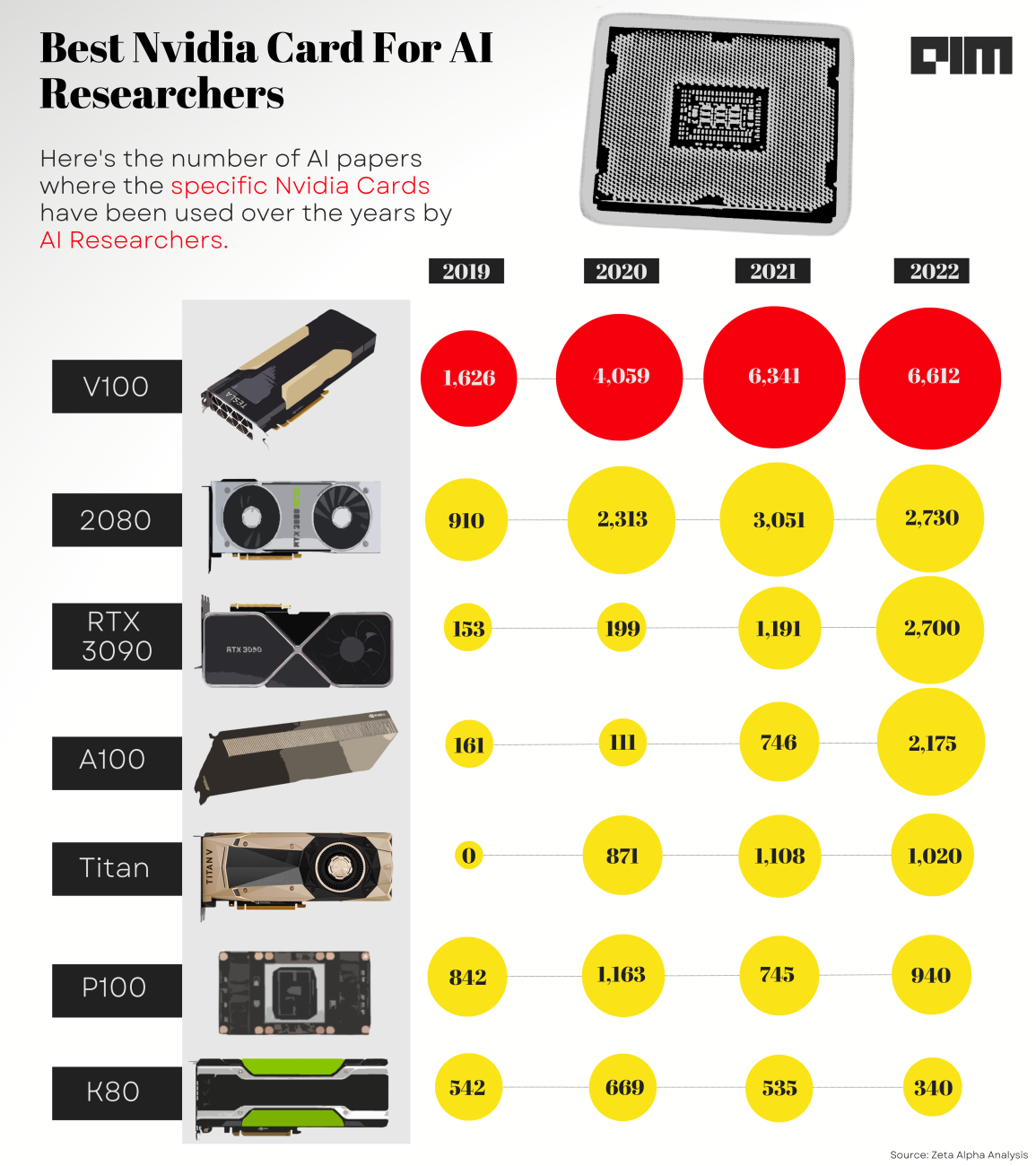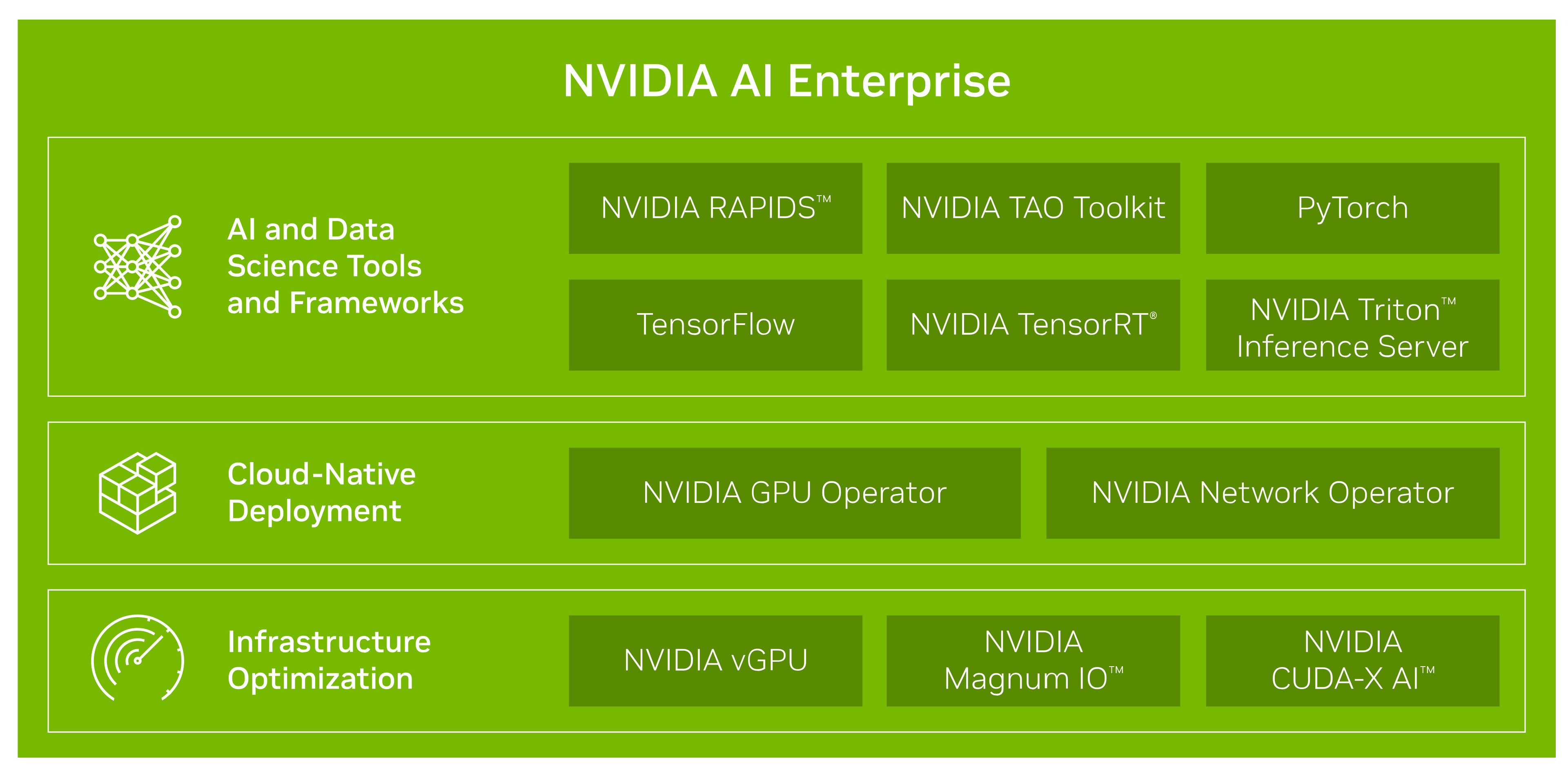
Introduction
It’s our pleasure to delve into the intriguing topic related to Nvidia: The AI and Gaming Platform That’s Making a Positive Impact. Let’s weave interesting information and offer fresh perspectives to the readers.
Table of Content
- 1 Introduction
- 2 The Rise of Nvidia: From Graphics Cards to AI Powerhouse
- 2.1 From Pixels to Processors: The Unexpected AI Revolution
- 2.1.1 The CUDA Architecture: The Foundation of Nvidia’s Success
- 2.1.1.1 CUDA’s Impact on Deep Learning
- 3 Nvidia’s Impact on Gaming: A Continued Legacy
- 3.2 Ray Tracing and DLSS: Enhancing the Gaming Experience
- 3.2.2 The GeForce Now Streaming Service: Gaming Accessibility for All
- 4 Nvidia’s Impact Beyond Gaming and AI
- 4.3 Nvidia in Autonomous Vehicles: Driving the Future of Transportation
- 4.3.3 Nvidia in Healthcare: Advancing Medical Research and Diagnosis
- 4.4 Nvidia’s Commitment to Sustainability
- 4.4.4 Addressing Ethical Concerns in AI
- 5 The Future of Nvidia: Continued Innovation and Expansion
- 5.5 Nvidia’s Role in the Metaverse
- 5.5.5 The Ongoing Importance of Talent Acquisition
- 6 Conclusion
- 7 FAQs
- 8 Closure
Nvidia: The AI and Gaming Platform That’s Making a Positive Impact
The Rise of Nvidia: From Graphics Cards to AI Powerhouse
Let’s rewind to the 90s. Remember those chunky computer monitors and the agonizingly slow dial-up internet? Back then, Nvidia was a relatively small company, focused primarily on graphics processing units (GPUs) for gaming. Who could have predicted that this relatively niche player would evolve into a global behemoth, dominating not only the gaming world but also the rapidly expanding field of artificial intelligence? It’s a story of innovation, strategic foresight, and a healthy dose of luck, all culminating in the Nvidia we know today – a company whose impact extends far beyond pixels and polygons. Their GPUs, initially designed to render stunning visuals in video games, unexpectedly proved incredibly adept at handling the complex calculations required for AI. This unexpected synergy launched Nvidia into a new stratosphere, transforming them from a gaming specialist into a critical player in the AI revolution. It’s a testament to the power of adaptability and recognizing unexpected opportunities when they arise. We’ll delve deeper into this fascinating evolution, exploring how Nvidia’s technology is shaping our future, both in the realm of entertainment and beyond.
From Pixels to Processors: The Unexpected AI Revolution
The transition wasn’t immediate, of course. It was a gradual realization, a dawning understanding that the parallel processing power of GPUs, originally designed for rendering 3D graphics, could be harnessed for the computationally intensive tasks of machine learning. Think of it like this: rendering a complex game scene requires millions of calculations simultaneously – the same is true for training a complex AI model. Nvidia’s GPUs, already optimized for parallel processing, were perfectly positioned to take advantage of this burgeoning field. This wasn’t just a matter of repurposing existing technology; it required significant research and development, optimizing the architecture of their GPUs for AI workloads. Early adopters in the AI community quickly recognized the potential, leading to a surge in demand for Nvidia’s hardware. This pivotal moment marked a turning point, transforming Nvidia from a gaming company into a key player in the AI landscape. The story highlights the unexpected potential of technology and the importance of being adaptable in a rapidly changing market.
The CUDA Architecture: The Foundation of Nvidia’s Success
One of the key factors contributing to Nvidia’s success in the AI domain is its CUDA (Compute Unified Device Architecture) platform. CUDA is a parallel computing platform and programming model that allows software developers to use Nvidia GPUs for general-purpose processing – an innovation that unlocked the immense potential of GPUs beyond just graphics rendering. This was a game-changer, allowing researchers and developers to leverage the raw power of Nvidia GPUs for a wide range of computationally intensive tasks, from AI model training to scientific simulations. Imagine trying to build a skyscraper with only hand tools; CUDA is like suddenly having access to heavy machinery, drastically accelerating the construction process. It’s a testament to Nvidia’s forward-thinking approach, recognizing the potential for their technology to extend far beyond its initial application. This foresight has been instrumental in their success, shaping the very fabric of modern AI development.
CUDA’s Impact on Deep Learning
The impact of CUDA on deep learning, a subfield of AI, is particularly significant. Deep learning models, with their massive datasets and complex architectures, require immense computational power. CUDA provided the necessary infrastructure, allowing researchers to train these models at a scale previously unimaginable. This led to breakthroughs in various fields, from image recognition and natural language processing to drug discovery and medical imaging. Without CUDA and the hardware that supports it, the progress in deep learning would have been significantly slower, potentially delaying the widespread adoption of AI technologies we see today. It’s a perfect example of how enabling technology can accelerate scientific advancement.
Nvidia’s Impact on Gaming: A Continued Legacy
While Nvidia’s foray into AI has been transformative, its legacy in the gaming world remains strong. Nvidia continues to push the boundaries of graphics technology, delivering increasingly realistic and immersive gaming experiences. Their GeForce RTX series of graphics cards, with their ray tracing capabilities, have redefined what’s possible in terms of visual fidelity. Imagine the difference between watching a black and white movie and experiencing a vibrant, high-definition film; that’s the leap forward Nvidia’s technology represents in gaming. This commitment to innovation in gaming not only fuels the industry but also strengthens their brand, attracting talent and further solidifying their position in the market.
Ray Tracing and DLSS: Enhancing the Gaming Experience
Two key technologies that have significantly enhanced the gaming experience are ray tracing and DLSS (Deep Learning Super Sampling). Ray tracing simulates the physical behavior of light, creating incredibly realistic lighting and reflections. It’s like adding a layer of photorealism to the game world, making it feel more immersive and believable. DLSS, on the other hand, uses AI to upscale lower-resolution images to higher resolutions, improving performance without sacrificing visual quality. It’s a bit like magic, allowing gamers to experience higher frame rates and smoother gameplay with less demanding hardware. These technologies showcase Nvidia’s commitment to delivering cutting-edge gaming experiences, pushing the boundaries of what’s possible in the world of interactive entertainment.
The GeForce Now Streaming Service: Gaming Accessibility for All
Nvidia has also expanded its reach in gaming through its GeForce Now cloud gaming service. This allows gamers to stream high-quality games to a wide range of devices, eliminating the need for expensive gaming PCs. Think of it as Netflix for video games – access a vast library of titles without the hefty upfront investment. This democratizes gaming, making it accessible to a broader audience, regardless of their budget or technical expertise. It’s a testament to Nvidia’s commitment to broadening the appeal of gaming and making it more inclusive.
Nvidia’s Impact Beyond Gaming and AI

Nvidia’s influence extends far beyond gaming and AI. Their technology is used in various industries, including automotive, healthcare, and scientific research. In the automotive sector, Nvidia’s GPUs power advanced driver-assistance systems (ADAS) and autonomous driving technologies, contributing to safer and more efficient transportation. In healthcare, their technology is used for medical imaging and drug discovery, accelerating advancements in medical research. In scientific research, Nvidia’s GPUs are used for simulations and data analysis, pushing the boundaries of scientific discovery. It’s a remarkable demonstration of the versatility and adaptability of their technology, having a significant positive impact across a multitude of sectors.
Nvidia in Autonomous Vehicles: Driving the Future of Transportation
The automotive industry is undergoing a significant transformation, with autonomous vehicles poised to revolutionize transportation. Nvidia’s technology plays a crucial role in this revolution, powering the complex algorithms that enable self-driving cars to navigate roads, detect obstacles, and make driving decisions. Their DRIVE platform provides a comprehensive suite of hardware and software solutions for autonomous vehicle development, accelerating the pace of innovation in this rapidly growing field. It’s a powerful example of how Nvidia’s technology is shaping the future of transportation, potentially making roads safer and more efficient.
Nvidia in Healthcare: Advancing Medical Research and Diagnosis
In the healthcare sector, Nvidia’s technology is transforming medical imaging and drug discovery. Their GPUs accelerate the processing of medical images, enabling faster and more accurate diagnoses. They are also used in drug discovery, simulating molecular interactions and predicting the effectiveness of new drugs. This has the potential to significantly improve healthcare outcomes, leading to earlier diagnoses, more effective treatments, and potentially saving lives. It’s a powerful demonstration of how technology can improve healthcare and contribute to a healthier future.
Nvidia’s Commitment to Sustainability
In recent years, Nvidia has also demonstrated a commitment to sustainability, investing in energy-efficient technologies and promoting responsible manufacturing practices. This includes optimizing their GPUs for lower power consumption and exploring new materials and manufacturing processes to reduce their environmental footprint. This shows a growing awareness of the environmental impact of technology and a proactive effort to mitigate it. It’s a crucial aspect of responsible technological advancement, ensuring that the benefits of innovation are not overshadowed by negative environmental consequences.
Addressing Ethical Concerns in AI
The rapid advancement of AI also raises ethical concerns, particularly regarding bias and fairness. Nvidia acknowledges these concerns and is actively working to address them. They are investing in research and development to mitigate bias in AI algorithms and promote responsible AI development. This commitment to ethical AI development is crucial, ensuring that the benefits of AI are shared equitably and do not exacerbate existing societal inequalities. It’s a vital aspect of ensuring that technology serves humanity and not the other way around.
The Future of Nvidia: Continued Innovation and Expansion
Looking ahead, Nvidia’s future appears bright. The company is well-positioned to capitalize on the continued growth of the AI and gaming markets, as well as expand into new areas. Their commitment to innovation, coupled with their strong financial position, allows them to invest heavily in research and development, ensuring that they remain at the forefront of technological advancement. It’s a company that is constantly evolving, adapting to the changing landscape and anticipating future trends. Their trajectory suggests a continued period of growth and innovation, shaping the technological landscape for years to come.
Nvidia’s Role in the Metaverse

The metaverse, a persistent, shared, 3D virtual world, is another area where Nvidia’s technology is playing a significant role. Their GPUs are crucial for rendering the complex graphics and simulations required to create immersive and realistic virtual environments. This suggests a continued expansion of Nvidia’s influence into the burgeoning field of virtual and augmented reality, further solidifying their position as a leading technology provider. The potential for growth in this sector is immense, presenting further opportunities for innovation and expansion.
The Ongoing Importance of Talent Acquisition
Nvidia’s success also depends on attracting and retaining top talent. Their ability to attract the best engineers, researchers, and scientists is crucial for maintaining their competitive edge. This requires a strong commitment to employee development, creating a supportive and innovative work environment. It’s a testament to the fact that technology, while crucial, is only as good as the people behind it. Investing in talent is not just a cost; it’s a strategic investment in future success.
Conclusion
Nvidia’s journey from a gaming graphics card company to a global leader in AI and beyond is a compelling narrative of innovation, foresight, and adaptability. Their technology is not just shaping the future of gaming and AI; it’s impacting various industries, from healthcare and automotive to scientific research. The company’s commitment to ethical development, sustainability, and talent acquisition further strengthens its position as a responsible and forward-thinking leader in the tech world. Their story serves as an inspiration, demonstrating the potential for technological innovation to create positive change and improve lives globally.
As we look towards the future, Nvidia’s continued investment in research and development, coupled with their strategic expansion into new markets, positions them for continued success. Their ability to anticipate and adapt to emerging technological trends, while maintaining a commitment to ethical and sustainable practices, ensures their continued relevance and positive impact on the world. The future of Nvidia, and indeed the future of technology, looks bright, promising further advancements and positive contributions to society.
FAQs
- What is Nvidia’s main source of revenue? Nvidia’s revenue comes primarily from the sale of its GPUs, which are used in gaming, AI, and other high-performance computing applications.
- How does Nvidia’s technology contribute to AI development? Nvidia’s GPUs, particularly with their CUDA architecture, provide the massive parallel processing power required for training complex AI models.
- What are some of the ethical concerns surrounding Nvidia’s AI technology? Ethical concerns include potential bias in AI algorithms and the responsible use of AI in various applications. Nvidia is actively addressing these concerns.
- What is Nvidia’s role in the metaverse? Nvidia’s GPUs are crucial for rendering the complex graphics and simulations needed to create immersive metaverse experiences.
- How is Nvidia contributing to sustainability? Nvidia is investing in energy-efficient technologies and promoting responsible manufacturing practices to reduce its environmental impact.
Closure
In conclusion, we hope this article has provided valuable insights into Nvidia: The AI and Gaming Platform That’s Making a Positive Impact. We hope you enjoyed reading and found it insightful. See you in our next article!